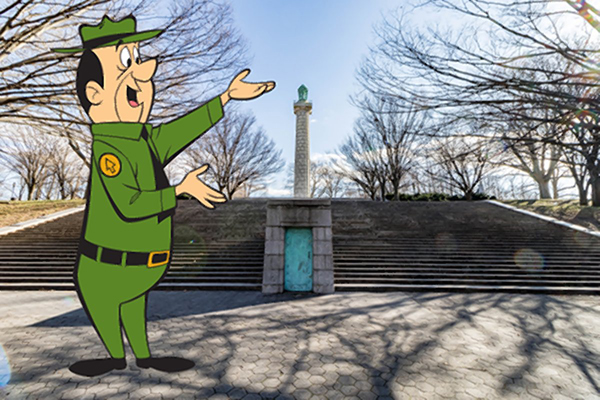It’s a grave situation!
The human remains inside the Prison Ship Martyrs’ Monument in Fort Greene Park might be the iconic structure’s only shot a becoming a national monument, according to federal officials.
The 109-year-old memorial — which commemorates the thousands who died in British prison ships in New York Harbor during the Revolutionary War, and still contains some of their bones — was already evaluated as a national historic landmark 30 years ago, but came up short because nothing very important happened there, National Parks Service reps told locals at a meeting on Tuesday.
But, they added, they do sometimes make exceptions for sites that contain dead people if they’re particularly good-looking graves.
“There are cemeteries and grave sites that have met the criteria, but they’re exceptions and they have to be outstanding examples of what in this case might be the architectural components of the site,” said National Parks Service planner Amanda Jones.
The service is nevertheless doing a new study on the memorial’s eligibility as a national monument because Congress ordered one at the behest of Rep. Hakeem Jeffries (D–Clinton Hill), and the spokespeople held the meeting on Tuesday to let locals know what it would entail.
A worthy monument must meet four criteria — national significance, suitability, feasibility, and a need for National Parks Service management, they said.
So the fact that federal officials have already decided that the towering tribute at the center of Fort Greene Park is not significant doesn’t bode well — although the previous landmark review only took a quick look at the memorial, while this one will delve deeper, Jones said.
“When it was looked at before, it wasn’t a formal survey,” she said.
Meeting attendees balked at the idea that the memorial might not be considered worthy, with one history buff pointing out that its crypt was designed by renowned landscape architects Frederick Law Olmstead and Calvert Vaux of Prospect Park fame, while the rest was the work of famed Beaux-Arts architect Stanford White, who also designed the Washington Square arch.
“It is probably the one place you’d be able to commemorate the conjunction of the developers and architect, and I think that gives the site an added significance,” he said.
Plus, Fort Greene Park was an actual fort during the war, locals noted — although the investigators can only examine the monument itself, and not the park around it, according to Jones.
National monuments can also be created through a presidential proclamation, and several people asked if it is possible to urge President Trump to single out the memorial as a national monument if the study doesn’t work out.
The reps danced around the question and merely told them that the proclamation process is usually a “grassroots process.”
But residents might soon find themselves writing to the White House, anyway — the parks service has conducted 32 studies into potential national parks at the request of Congress since 2009, and not a single one has resulted in a new designation, according to spokeswoman Ellen Carlson.
The Fort Greene study is expected to take 18 months if all of the criteria is evaluated, and could then sit in Congress for another year or two before lawmakers decide what to do next, according to Jones.
You can follow the study’s progress at parkp
























